NAVAGRAHAS are the nine celestial bodies, that as per Hindu tradition influence the lives of people at various times. Some indirect connection to astronomy but the cause and effect is not clearly apparent to us, as it was to our ancestors. Each of the celestial bodies has a form as a deity too, who is worshipped and wherever there is a ‘dosha’, special prayers or antidotes to the ‘dosha’ are carried out. Earlier, as per science, there were nine planets in the solar system and recently, Pluto had been relegated to a ‘dwarf planet’, leaving 8 planets viz. Mercury, Venus, Earth, Mars, Jupiter, Saturn, Uranus & Neptune. The Navagrahas as per Vedic astrology are still nine in number, whereas after excluding Earth too (as it is our own planet), it should be seven only. Are the celestial bodies of the west and as per our ancestors totally different? Not totally, but partially. See how they stack up, with the Sun (a star) and Moon (a satellite) included, as well.
- Budh or Budhan – Mercury
- Shukran – Venus
- Sevvai/Angaragan – Mars
- Guru/Brihaspati – Jupiter
- Shaneeswaran – Saturn
- Rahu – Shadowy lunar node, not a visible planet
- Kethu – Shadowy lunar node, not a visible planet
- Suryan – Sun
- Chandran – Moon
All these nine celestial bodies have temples/shrines in temples of their own, where people pray to them in large numbers. All except one are temples, where the presiding deity is Lord Shiva, but the navagraha has a specific shrine within the temple complex and which has gained prominence, even more than the presiding deity. Again, one of the temples is an exception, where Shiva still dominates. All the nine temples are around Kumbakonam, but one among them is not in Tamil Nadu, but falls under the union territory of Puducheri. At the end of this blog, you should be able to figure out the 3 exceptions.
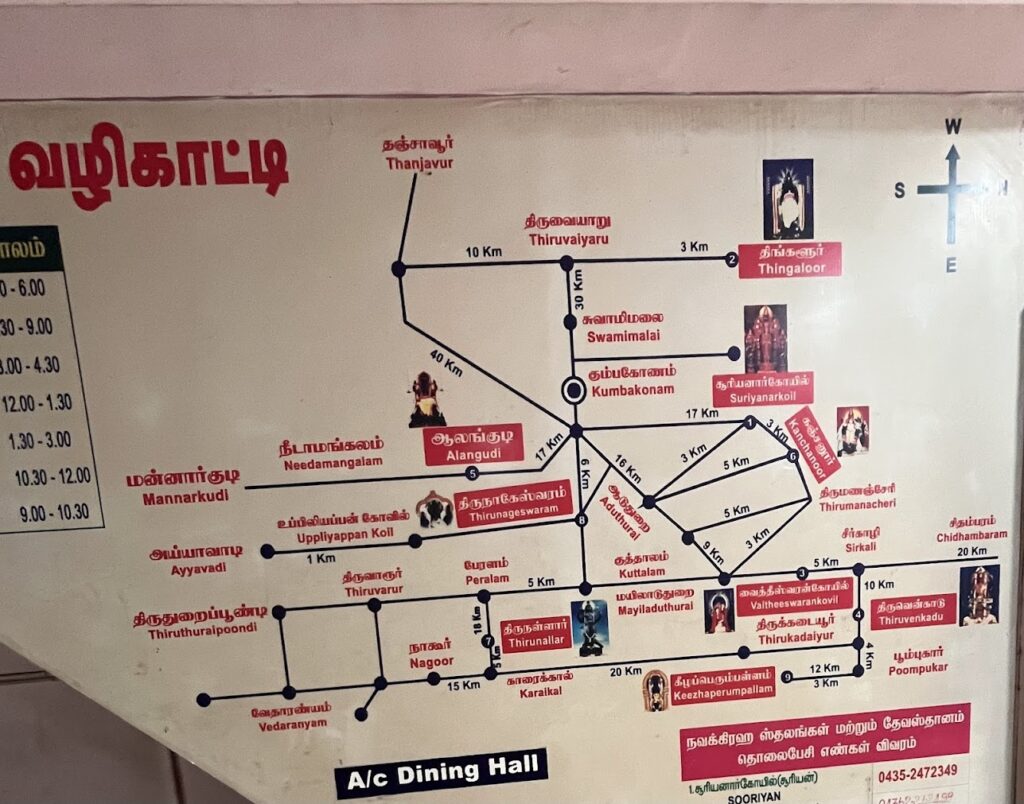
The above map showing the 9 Navagraha sthalas was found in a small eatery where we had our breakfast and, I thought it serves as the best guide. First things first — The 9 Navagrahas can be covered in one say, but if people desire propitiating some of the Navagrahas with elaborate poojas, it can take 2 days, with the trip being broken up. We opted for the day trip, paid Rs.4500 for the cab and off we went. The Tamil Nadu State Transport Corporation also runs 1-day Navagraha tours by bus but, this is only on Sundays.
Set off at 6 AM and out first visit was to Thingalur to have darshan of Chandran, the Moon God. A drove of a little over an hour and branching off from the Kumbakonam-Tiruvaiyaru Road, we were at the little village of Thingalur.
Very few people at the temple at this time. We prayed to the presiding deity Kailasanathar in lingam form and then to His consort, Periya Nayaki. After this only, we are supposed to go to the shrine of the Navagraha, which in this case was Chandran, Soma or the Moon God. Legend has it that Chandran had married the 28 daughters of Daksha but, he gave undue attention only to the youngest one. Infuriated, the other daughters complained to their father Daksha, who cursed Chandran to lose all his powers and sheen, Chandran prayed to Kailasanathar at this very place and regained his powers. This temple is said to have been built by the early Cholas, but its present structure was put up by the Nayaks. People pray here for mental peace, emotional stability and hiccups before/in marriage.
Next place, Guru Bhagwan (Jupiter) temple in Alangudi, said our driver-cum-guide. Going off the main road and through some interior roads, we were at the Apathasahayeswarar temple of Lord Shiva, meaning one who protects you from danger by taking it upon Himself. Legend has it that when the samudra mathan was taking place, large quantities of poison was released from Vasuki and other serpents that was extremely dangerous for all living beings. Shiva swallowed the poison at this place and hence the place came to be called Alangudi (‘Alam’ meaning poison & ‘kudi’ meaning drink), A beautiful temple with Chola architecture, said be from the 16th century, it was built by an ardent devotee called Amuthonkar, who was a minister with the Chola king, Musukuntha Chola. After the construction was complete, as the king was not given due credit, he had Amuthonkar beheaded. When the entire village echoed the name of Amuthonkar, the king realised his mistake and sought forgiveness at the same temple.
Next was the shrine of Elavarkuzhali, the consort of Apathasahayeswarar. There is no special shrine for Guru Bhagwan as such, and He is worshipped as Dakshinamurthy, a form of Shiva Himself. As per Vedic astrology, Guru or Brihaspati, governs knowledge, wisdom, wealth, children, marriage and spirituality ……. that is every aspect of life. Hence, on every Thursday as also on days when Guru transitions from one zodiac sign to another, the temple sees massive crowds. as was evident from the long barricades created for queues. Not much crowd when we visited, on a Sunday. Devotees offer yellow colored cloth and chana dal to Dakshinamurthy.

A quick breakfast, where I had to skip the traditional filter coffee, as the server said ‘No milk supplied on Sundays and e were moved towards Thirunageswaram Naganathaswamy temple, where Rahu’s shrine draws in big crowds, knowing him to be a malefic planet or shadow planet. We were just around a kilometer from the temple and as we entered a narrow street, there was a roadblock and a couple of autorickshaws. We were told four-wheelers were not allowed beyond this point and one had to take an autorickshaw from here. ‘ Local mafia’, muttered our driver, as he reversed the vehicle and took us round a slightly longer route, right up to the elaborate parking in front of the temple.
These were the only pictures clicked here. Why? There were continuous announcements over the public address system that mobile phones have to be deposited in safe lockers and not carried inside the temple. As sticklers to rules, we left our mobiles with our driver and were surprised to see many people not only carrying mobiles but clicking away merrily. Easily, the largest temple complex we had seen today, it is said to have been built in the 10th century by Aditya Chola and, is one of the Paadal Petra Sthalam. Later expamsions and extensions were made by the Nayak rulers. The place originally was covered with Champaka forests and was known as Champakavanam. As the serpents, Adiseshan, Dakshan & Kaarkotakan worshipped the shivling at this place, Shiva came to be known as Naganathaswamy and the place as Thirunageswaram. Piraisoodi Amman is the consort of Naganathaswamy and has a separate shrine inside. Another Amman shrine here is that of Girigujambigai who is in penance. Indra had once misbehaved with Ahalya, wife of sage Gautama who cursed him. In order to atone his sins, Indra worshipped Girigujambigai with punagu leaves and was relieved of the curse.
This is the most important Rahu sthalam and anyone with Rahu dosha performs special pooja here. As per Vedic astrology, Rahu is malefic but at the same time rewards people when appeased. Ambitions, desires and challenges are all attributed to Rahu. ‘Rahu kaal’ is supposed to be the most inauspicious time for any new beginnings, including travel. We were told that when milk abhisheka is done in the temple during Rahu kaal, on the idol, the milk turns blue. Legend is that when Vishnu as Mohini was distributing Amrit to the Gods, Rahu who was demon, surreptitiously sat between the Sun God and Moon God. As soon as Mohini had served a drop of Amrit, the Sun and Moon pointed out that Rahu was an intruder. An enraged Vishnu took out his chakra and sliced off Rahu’s head. The lifeless body became Kethu but, as he had tasted Amrit, the head that had disappeared acquired some powers. To this day, Rahu’s enmity with the Sun and Moon remain intact, as he swallows them during eclipses. The Rahu shrine shows Rahu with his two wives, Nagavalli & Nagakanni. Good darshan, but no pictures.
The next two temples are reasonably close to one another, announced our driver — Suryanar Kovil in Aduthurai (Sun temple) and the Shukran sthalam in Kanjanur.
Around 11.10 AM. We had reached Aduthurai but, our driver in order to avoid parking charges in front of the temple, parked the car on the main road and asked us to take a short walk through a shaded lane right to the temple. A 3 -minute walk and we were looking at the Suryanar Kovil gopuram that was undergoing renovation/restoration. As we stepped inside the temple, we could see renovation work being carried out there too.
This us the only Navagraha temple in this circuit where, Shiva is not the presiding deity. Surya the Sun God, provider of energy to all lives is the presiding deity with each of the other Navagrahas having separate shrines. As it was a Sunday, there was a fairly long queue, and it took us around 45 minutes to go inside the sanctum.
One has to offer respects first before praying to Surya, who is seen with His two consorts, Usha and Pratyusha. Right opposite Surya’s shrine is that of Guru or Jupiter. As one walks across the prahara in anticlockwise direction, the shrines of the other Navagrahas are seen. The temple that carries the distinct Chola type of architecture was built in the 11th century during the reign of Kulothunga Chola.
Interestingly, the legend of the Navagrahas has this location as the central place. Sage Kalava, who could foresee the future, saw that he would soon suffer from leprosy. In a pre-emptive action, he prayed to the Navagrahas, who agreed to cure him of the same. This infuriated Brahma, who roared that ‘ Navagrahas have no authority to grant boons. Whatever is written in Fate has to come true’. He cursed the Navagrahas to suffer from leprosy themselves. when the Navagrahas pleaded for mercy, Brahma banished them to Vellurukku Vanam, or the White Flower jungle, which is present day Aduthurai. The Navagrahas prayed to Lord Shiva, who blessed them and said they can stay here and in other temples of His and bless their devotees.
A short drive from Aduthurai and we were at the Shukra sthalam, i.e. the Agneeswarar temple in Kanjanur. Shukra is said to denote wealth and bestow His devotees with abundance, so how come the place is named Kanjanur (Kanjan meaning ‘miser’ in Tamil), I wondered. Later learnt that the name was actually Kanchanur (meaning town of gold), that got corrupted to Kanjanur. As we stood at the entrance we could see that this temple was also undergoing renovations.
The temple built during the reign of the Medieval Cholas and later expanded by the Vijayanagar kings has many legends associated with it. It is said Shukracharya, the guru of the asuras, used the Mritasanjivanai mantra to bring back to life all the slayed auras, so much so that the Devas were always outnumbered and could never defeat the asuras, The Devas took refuge here in Kanjanur and pleaded with Shiva to help them. Shiva invited Shukracharya to the spot where the temple stands and, swallowed him alive. Shiva as Agneeswarar is worshipped in this temple with Shukracharya inside Him. Another legend says that Agni worshipped Shiva here and hence He took the name Agneeswarar. Brahma is said to have witnessed the celestial wedding of Agneeswarar and Karpagavalli here. The sage Parasara is also said to have witnessed Shiva’s cosmic dance in this temple.

One factor that people doing the one-day Navagraha tour should take into account is the fact that most temples, close between 12 and 1.30 PM and then reopen by 4-4.30 PM only. How does one utilise the time in between? Some come back to their place of stay in Kumbakonam for lunch and rest after five of the Navagraha temples and then start for the afternoon session. Being Sunday, Vaitheeswaran Koil will be open till 1.30 PM and we could make a dash for it before lunch, informed our driver, So we raced along the main road before getting into the town that bears the same name, Vaitheeswaran Koil. This temple has a shrine for Sevvai or Angaragan (Mars). Unlike many of the other Navagraha temples, here Shiva as Vaidhyanathar is more popular and devotees throng the temple seeking good health. Vaidyanathar, literally means Lord of Medical treatment or a Doctor. His consort is called Thayal Nayaki, the one who provides the thayilams or native medicine to Vaitheeswaran.
It was close to 1.20 PM and there was a fairly large crowd in the temple, with many people after darshan relaxing in the long corridors. Continuing with the legend, who did Vaitheeswaran cure? Angaragan or Mars was afflicted with leprosy and after he prayed here and had a dip in the temple tank, he was cured. Also , this is the location where Parvati had given a Vel or spear to Her young son, Karthikeya ( Murugan) to fight with the demon Soorapadman. Sure enough, Karthikeya vanquished the demon and hence He is worshipped in this temple as Bala Muthukumaraswamy. During the battle, many in his army were injured and Vaitheeswaran is said to have treated them. Rama and Lakshmana are said to have prayed at this location. The sanctum of Vaitheeswaran faces west, unlike in most Shiva temples where it faces east. Angaragan has a separate shrine and people with Sevvai dosha that is said to come in the way of marriages, throng the shrine to offer special poojas. Moreover, the entire town of Vaitheeswaran Koil is renowned for ‘Jeeva Nadi astrology’, where ones past, present and future are read from ancient scripts written on palm leaves. Many nadi josiyam centers abound in this town. We had a quick darshan of Vaitheeswaran, Thayal Nayaki and of course, Angaragan, apart from Dhanavantri, who too has a separate shrine. Something unique is the Navagrahas positioning in this temple. They are all in a straight line unlike in other temples, where the nine grahas look in different different directions.
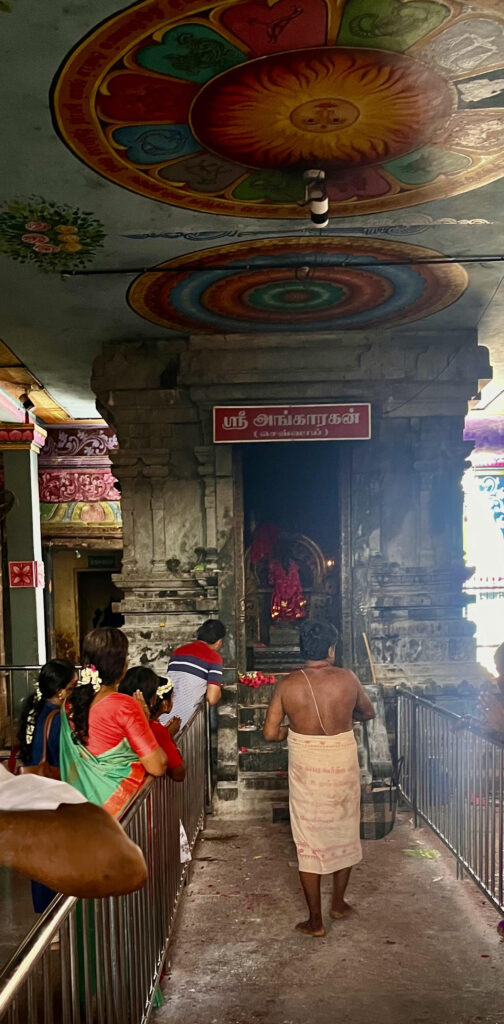
The temple relates to the times of Vikrama Chola, later additions being made by the Pandyas, Nayaks and the Maratha ruler Thulaja. Inscriptions in the temple make mention about Kulothunga Chola from the 11th century. This temple is celebrated as a Paadal Petra Sthalam. At present, it is not under the management of the HRCE but is maintained by the Dharmapuram Adheenam, a Shaivite mutt based in Mayiladuthurai. Darshan completed, it was time for a long, leisurely lunch at an air-conditioned restaurant, as the next temple would open only by 4-4.30 PM. It was only 2. 15 PM now. So, off we drove to this nice restaurant and had a banana leaf lunch.
Lunch done, we drove slowly towards Thiruvenkadu on the road to Poombuhar to pay obeisance to Budh or Mercury. Still, we were there at the temple gate by 3.15 PM and the sanctum would be open by 4 PM, we learnt.
We ventured inside and walked around the temple complex as we awaited the darshan by 4 PM. Easily the prettiest temple, we had seen today and by far one of the largest. What struck us most was the cleanliness and the huge water bodies inside. The place was originally known as Swetharanyam and since the Swayambhu shivling was found here, Shiva is worshipped here as Swetharanyeswarar and His consort is Brahmavidyambigai. This is another of the Paadal Petra Sthalam. Legend has it that there was an asura named Maruthuvasuran, who on getting a boon from Brahma started troubling everyone. Finally, Shiva revealed His angry face of Agoramoorthi and slayed him. In this temple there is a separate shrine for Agoramoorthi as well. Another shrine is that of Nataraja, the cosmic dancer. It is said that Shiva performed the tandava for the benefit of sage Agastya here, even before dancing at Chidambaram. Hence, another name for this place is Adi Chidamabaram.
The priest finally made his appearance by 4.15 PN. The waiting people rushed inside the sanctum and we too followed suit. Had a good darshan of Swetharanyeswarar and then we noticed the Nandi, with holes. It is said that when Maruthuasuran was wreaking havoc, Shiva sent Nandi to fight with him. The asura with his spear injured Nandi badly and this angered Shiva, who assuming the form of Agoramoorthi, slayed him. Darshan of Agoramoorthi and Nataraja followed.
A good darshan of Brahmavidyambigai was followed by the darshan of Budh Bhagwan or Mercury who is supposed to render wisdom and more importantly speaking skills to his devotees.

As we walked back to our car, we could not help admiring again and again, this beautiful, well-maintained temple originally built by the Cholas and improved upon in the 16th century by the Vijayanagar rulers, acclaimed as a Paadal Petra Sthalam.
A short drive of about 20 minutes and we were in the quiet village of Keezhaperumpallam. Here is the small but important Navagraha shrine devoted to Kethu, a malefic graha and always uttered in the same breath as Rahu. The presiding deity here is Shiva as Naganathaswamy with His consort being Soundaranayagi. This temple, as is the case with many others in this region was originally built during the rule of the Cholas but expanded by the Nayak rulers.
Legend has it that when the samudra manthan was on and Vasuki emitted poison and poisonous fumes all round, Shiva as Apathasahayeswarar, swallowed the poison at Alangudi, to save all living beings. Vasuki, ashamed of his mistake is said to have prayed to Shiva at Keezghaperumpallam and a pleased Shiva, as Naganathaswamy blessed him to stay here. Kethu has a separate shrine here and people with Kethu dosha visit here to perform special poojas.
Now, for the last or 9th temple and where the most feared Navagraha, Shani or Saturn has His shrine. It is said, none can escape the effects of Shani during their lives but, only the ill-effects can be reduced by praying here at the Dharbaryaneswarar temple in Tirunallar. It is said that when pleased, Shani bestows good fortune on His devotees while leaving. This is the only one among the 9 Navagraha temples that does not lie in Tamil Nadu. Tirunallar, around 5 kilometers from Karaikal, is in the union territory of Puducheri (Pondicherry).
6.20 PM – Street and shop lights as also the temple tower lights were on. Darkness was setting in, as we walked towards the temple.
The presiding deity of this temple is Dharbaryaneswarar and His consort is Bogamartha Poonmulayal. Of course there is a separate shrine for Shaneeswaran or Shani Bhagwan, but there is a difference in the order of worship in this place. Shani is supposed to be the gatekeeper here and so, first prayers are offered to Him, before praying to the presiding deity. The whole area was supposedly a Dharba forest and since Shiva resided here, He came to be called Dharbaryaneswarar. How the place came to be called Tirunallar is also interesting. It is said that when King Nala, married the beautiful Damayanthi, Princess of Vidarbha, Shani was furious because He had secretly longed to marry her. He vowed to create problems in Nala’s life and destroy him. However, as Nala was highly virtuous, Shani had to wait for 12 long years before He could touch him. Once, Nala could not carry out his morning ablutions as there was no water and, Shani caught him. Then began years of travail for Nala, lost his physical form, lost heavily in gambling, his kingdom, his wife and wandered around meaninglessly before life turned full circle for him. He came here and had a dip in the pond and Shani left him. Hence, the name Tiru’Nala’r. Nala constructed a tank that is called Nala Teertham where people to this day, take a bath, to rid themselves of Shani’s malefic effects.
The temple gets packed, we were told on Saturdays and special occasions, when Shani transits from one celestial house to another, Luckily for us, not much crowd and were able to have a nice darshan, followed by lighting of til lamps for Shaneeswaran.
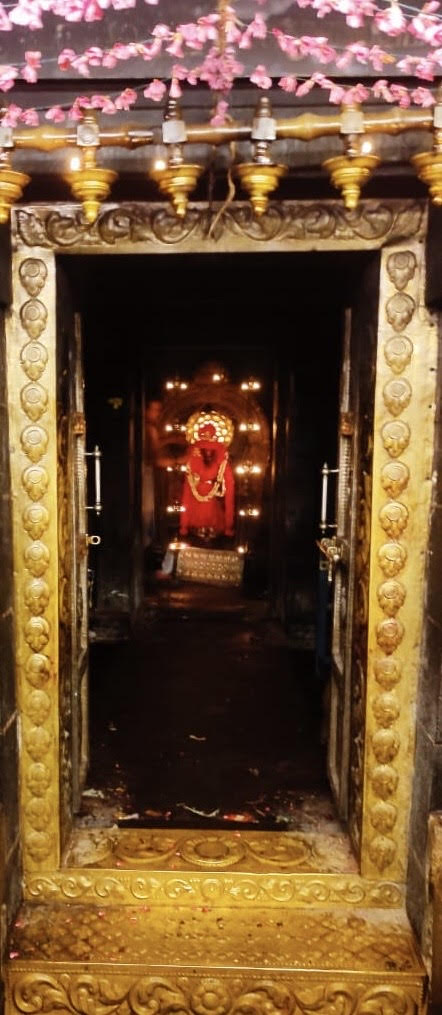
Tired but satisfied that we were able to complete the Navagraha circuit, we reached our hotel in Kumbakonam ny 8.30 PM, facing some traffic close to our destination. A day well spent.
Discover more from BalasBroadcast
Subscribe to get the latest posts sent to your email.
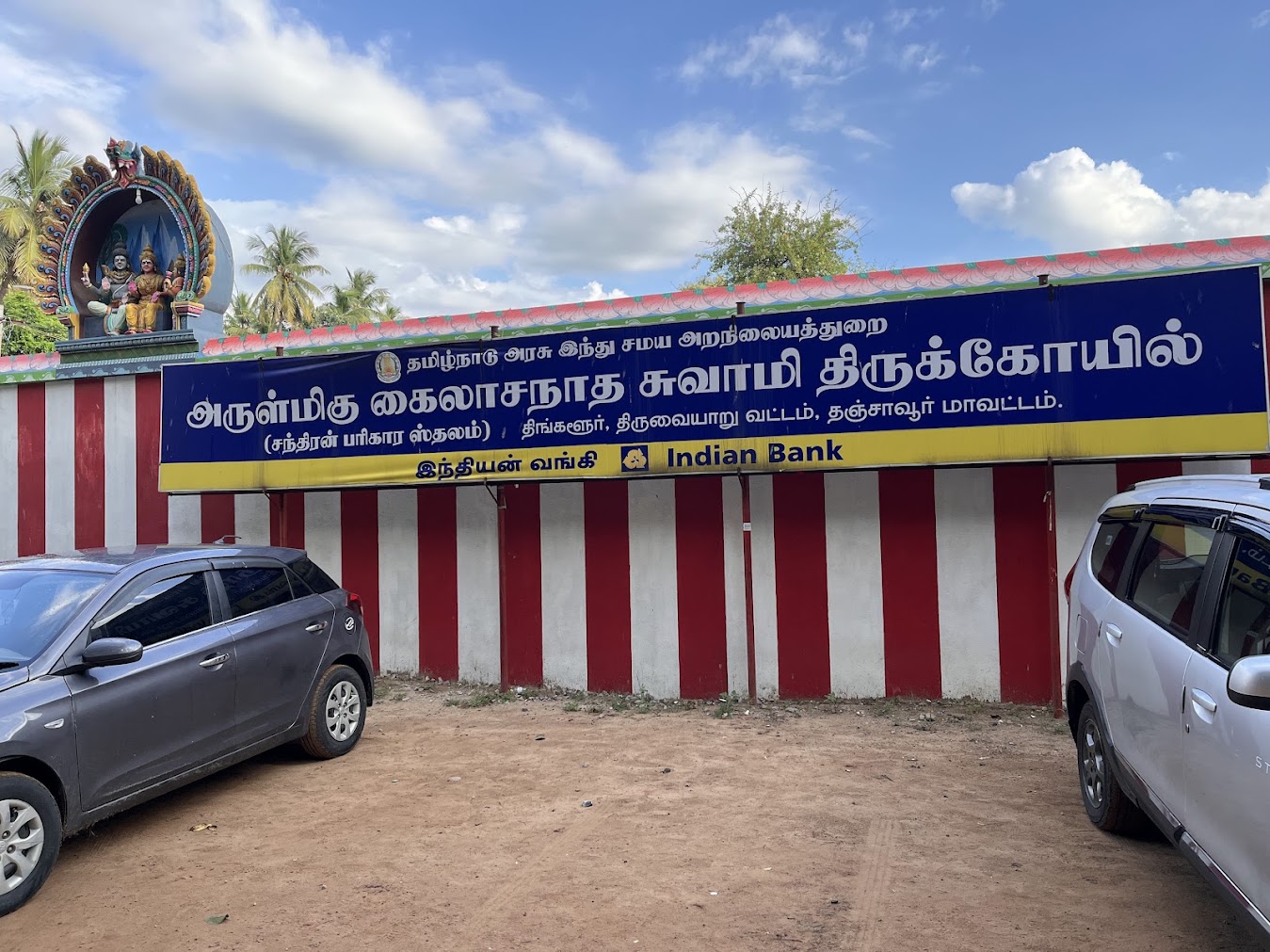
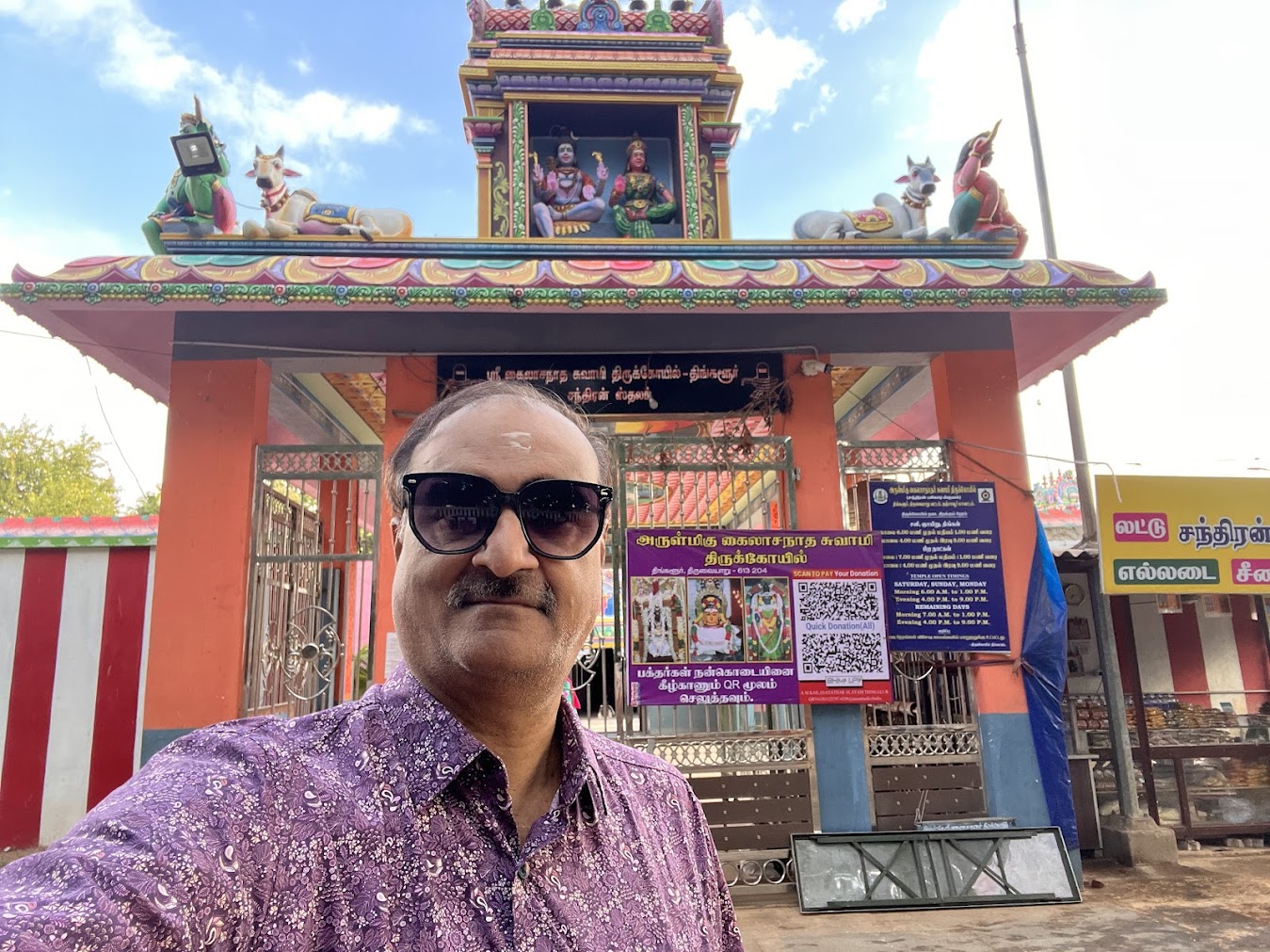

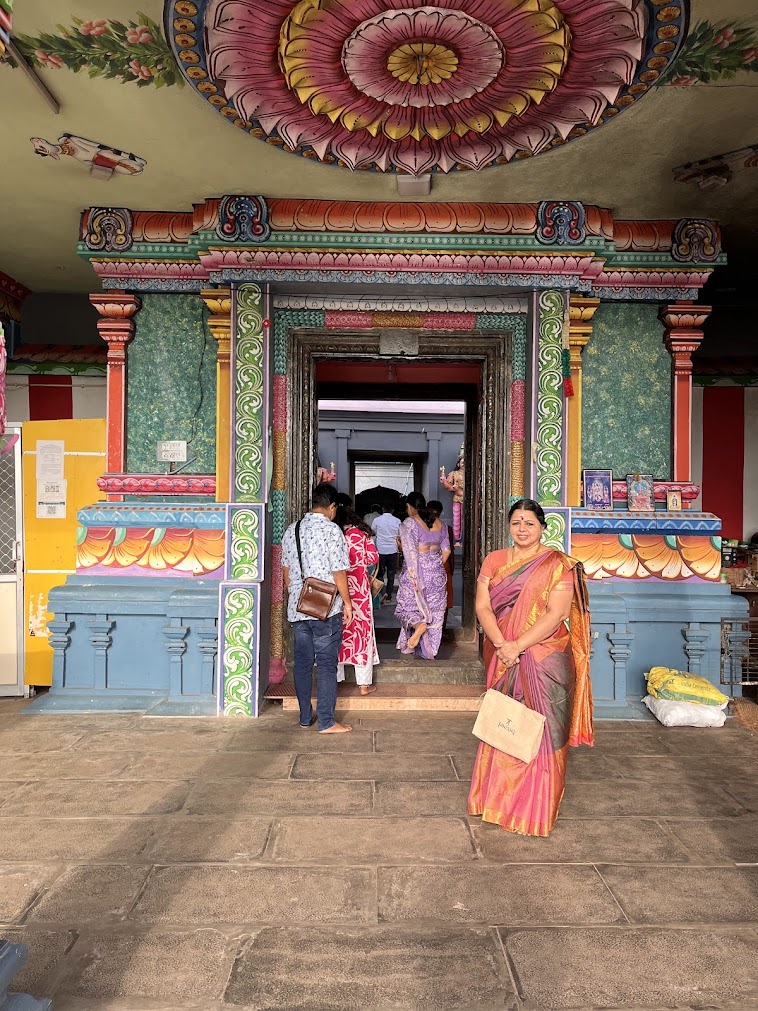

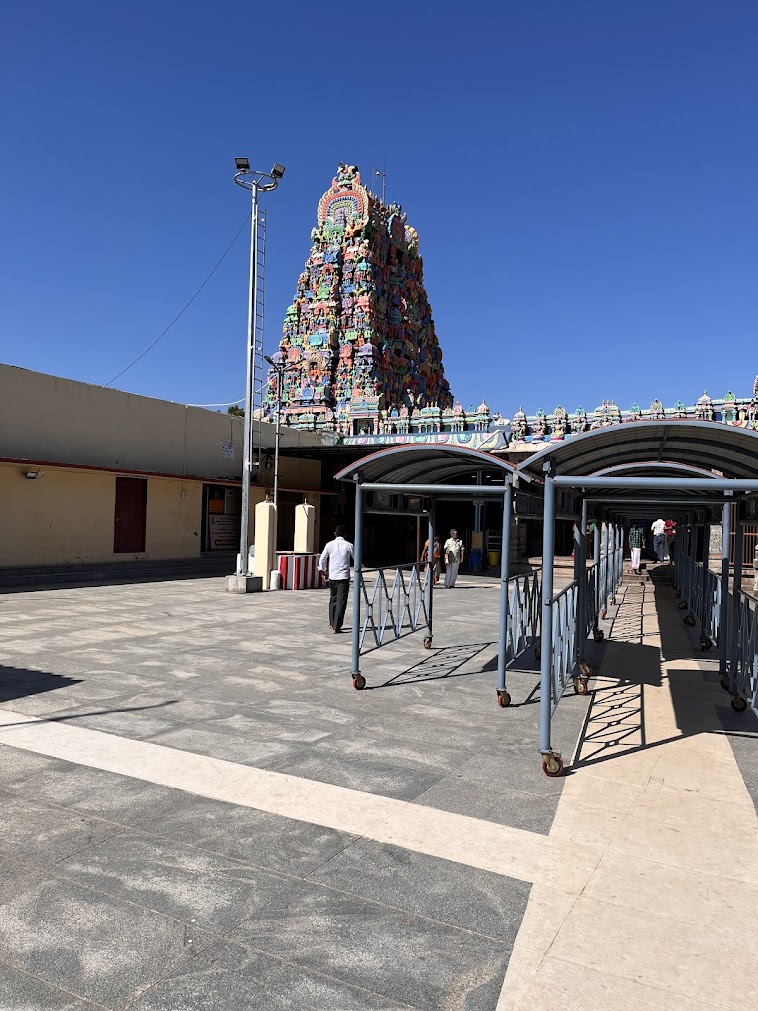
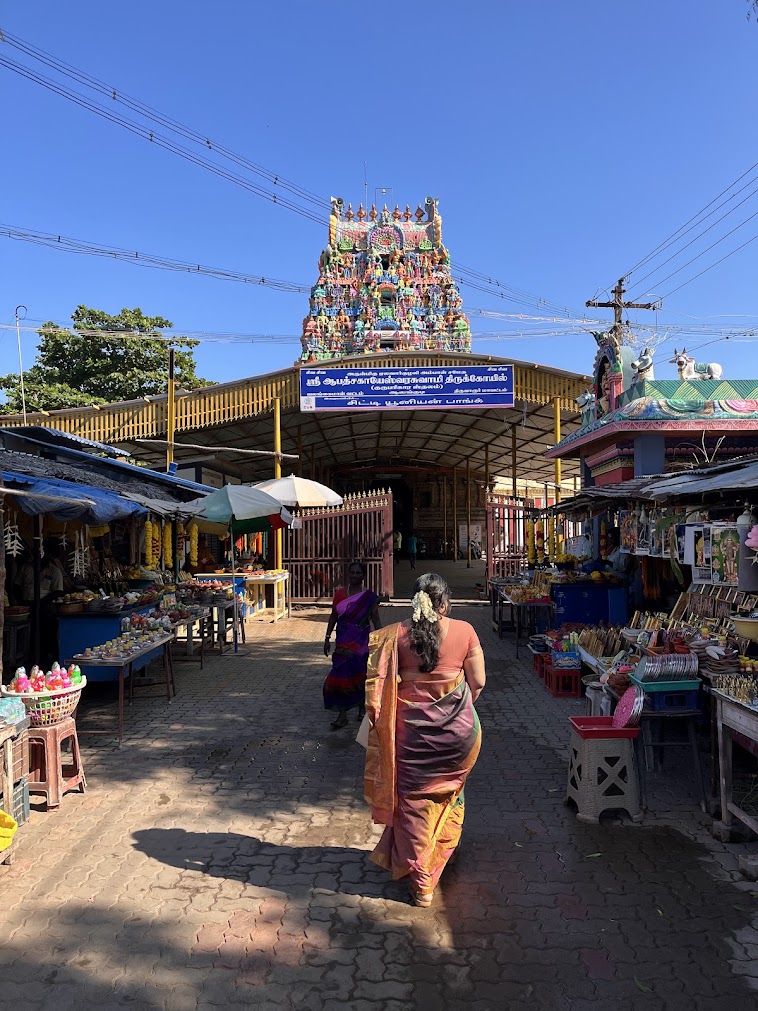
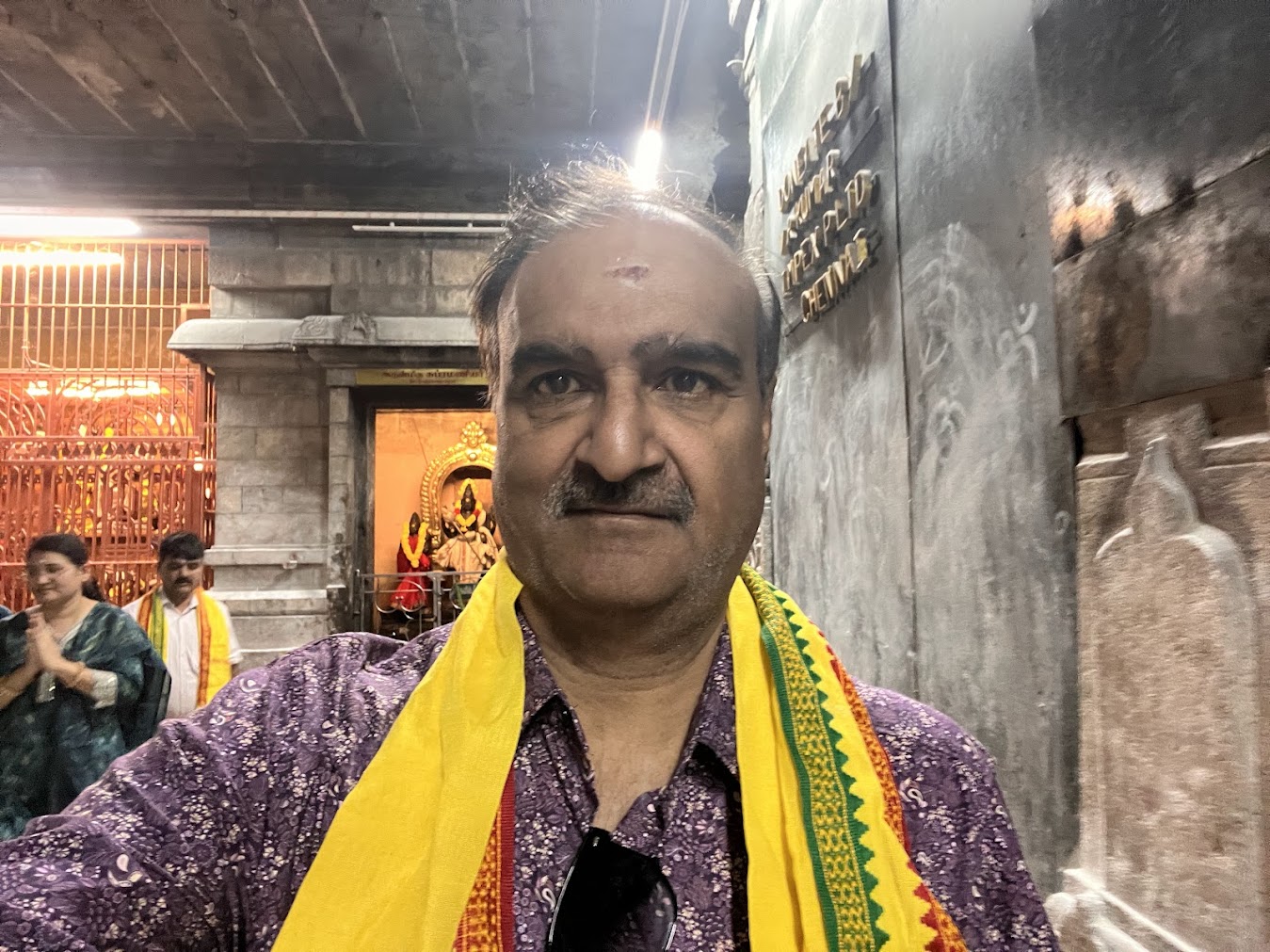
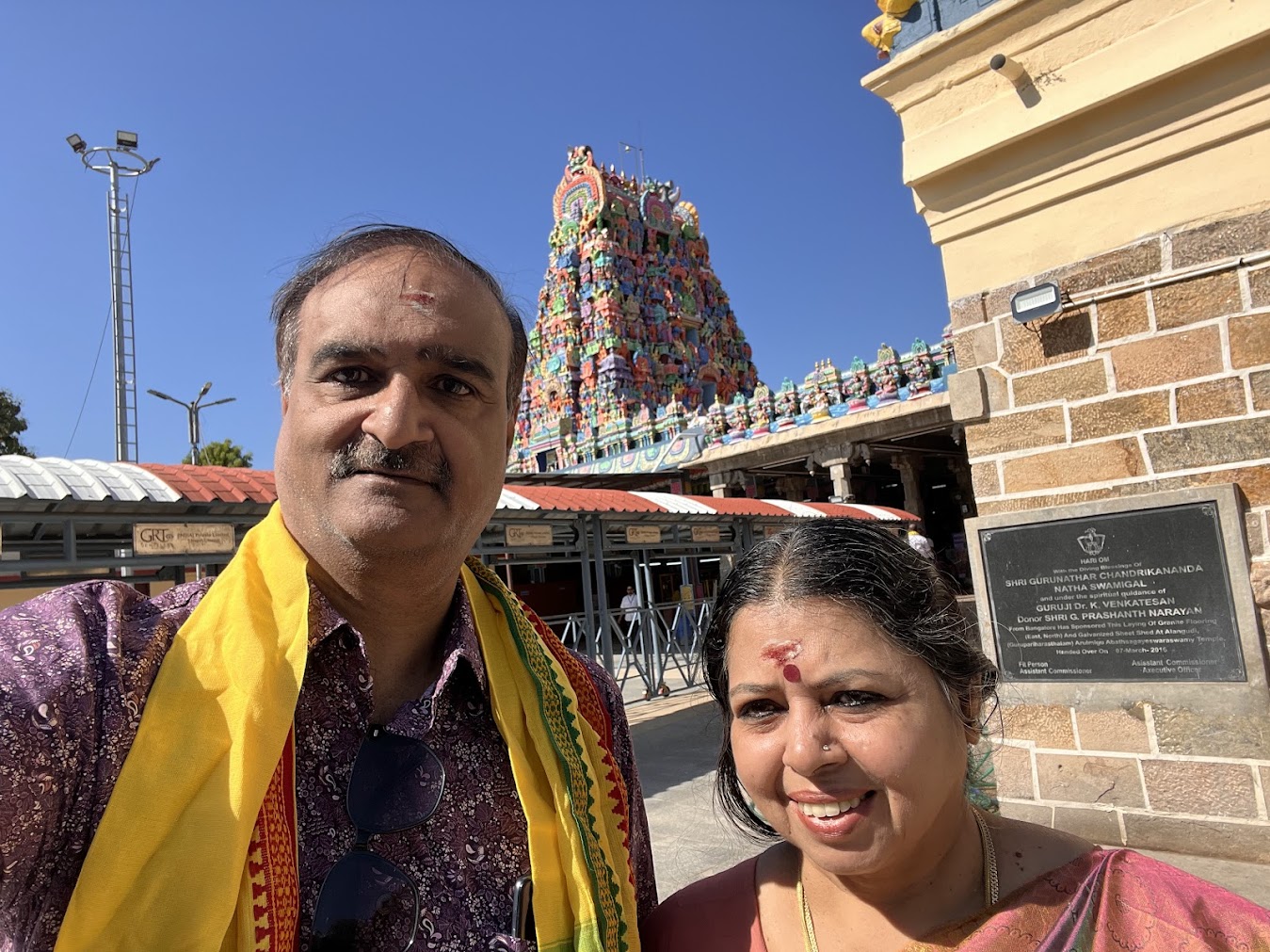
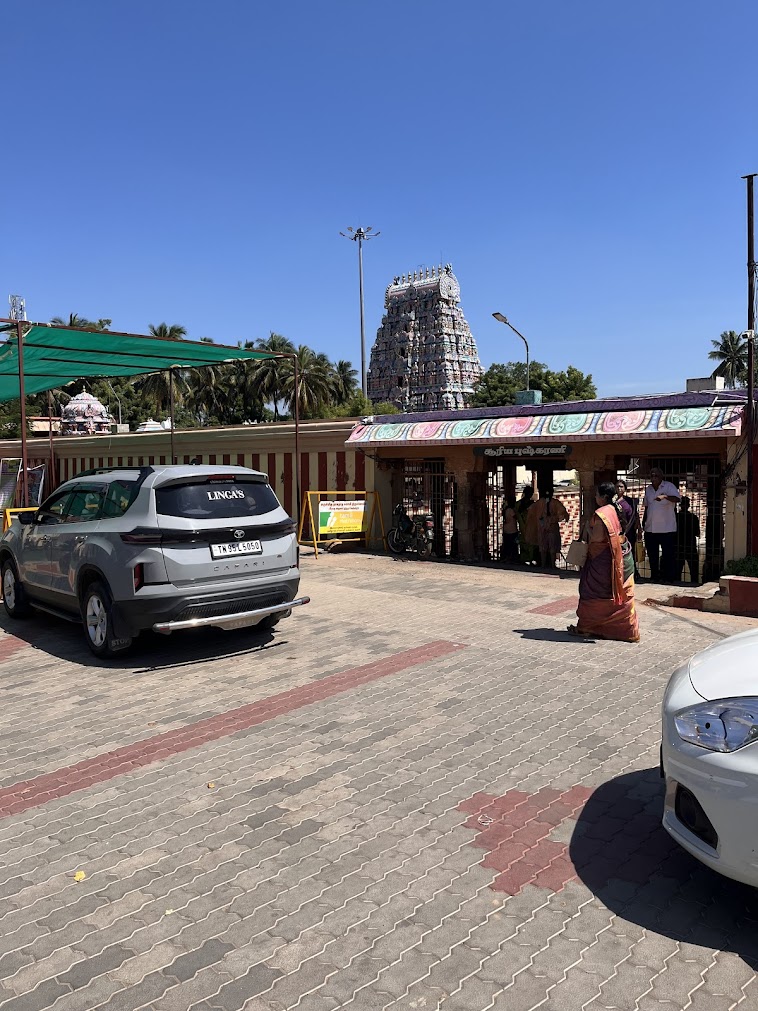


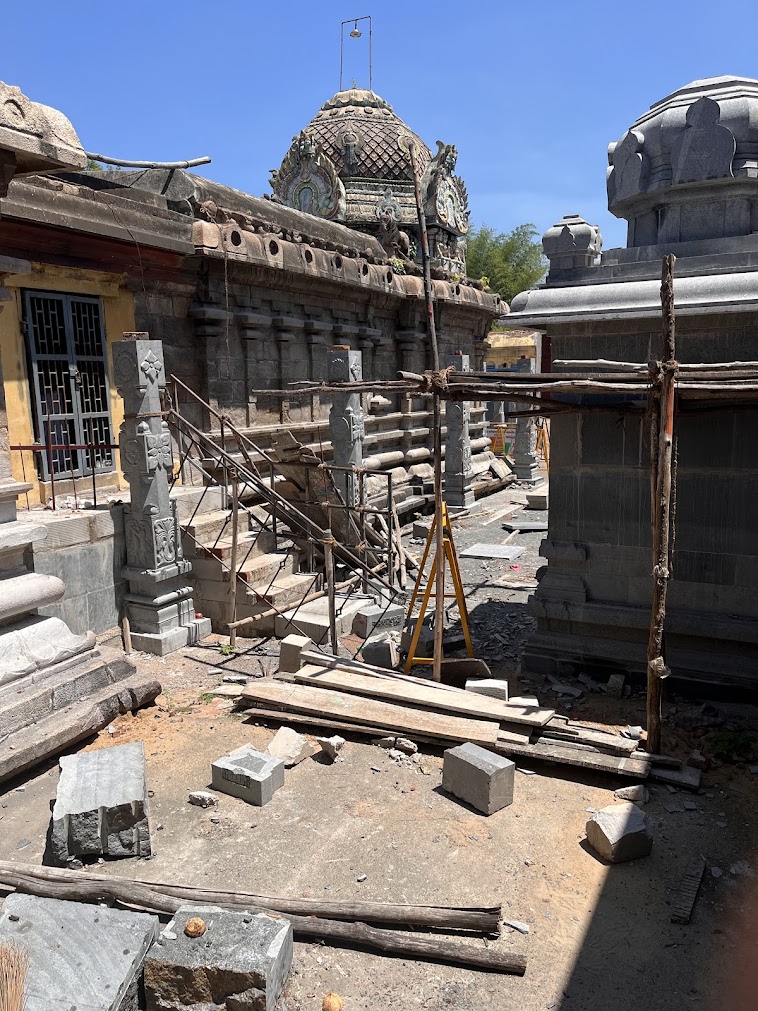
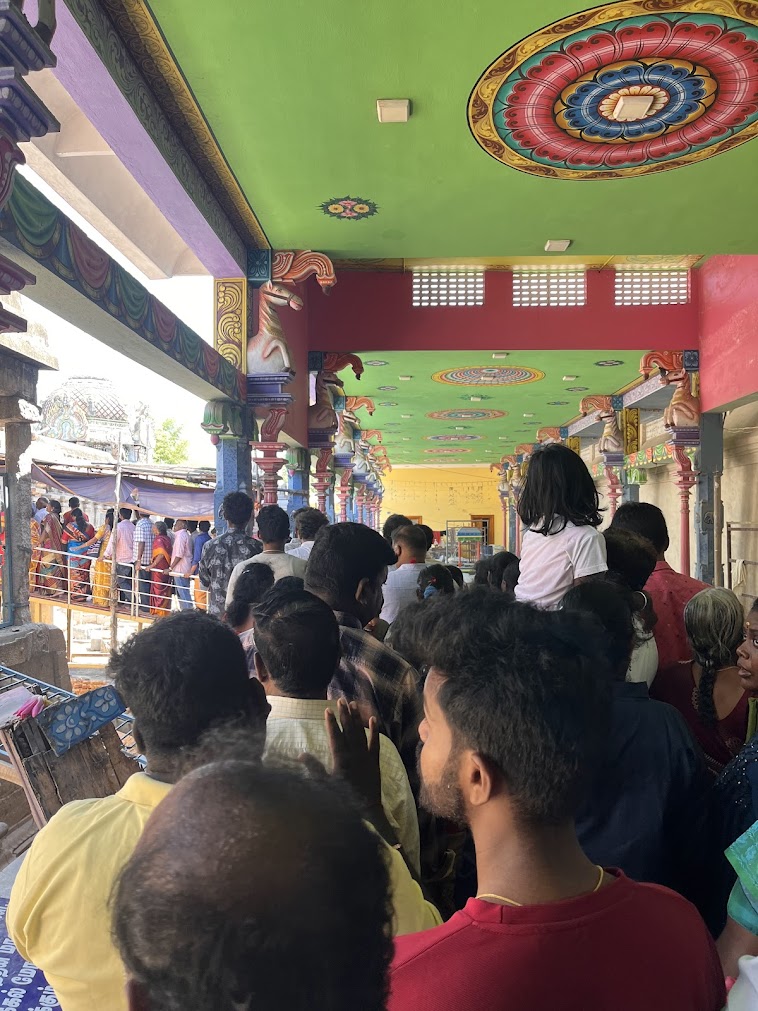

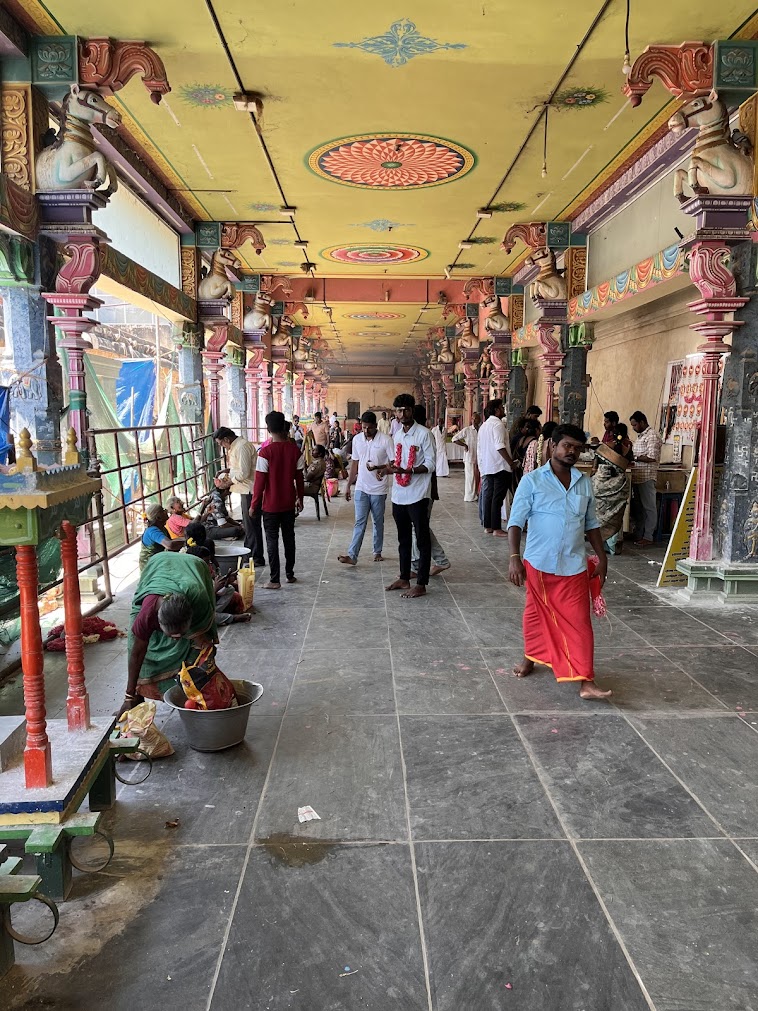
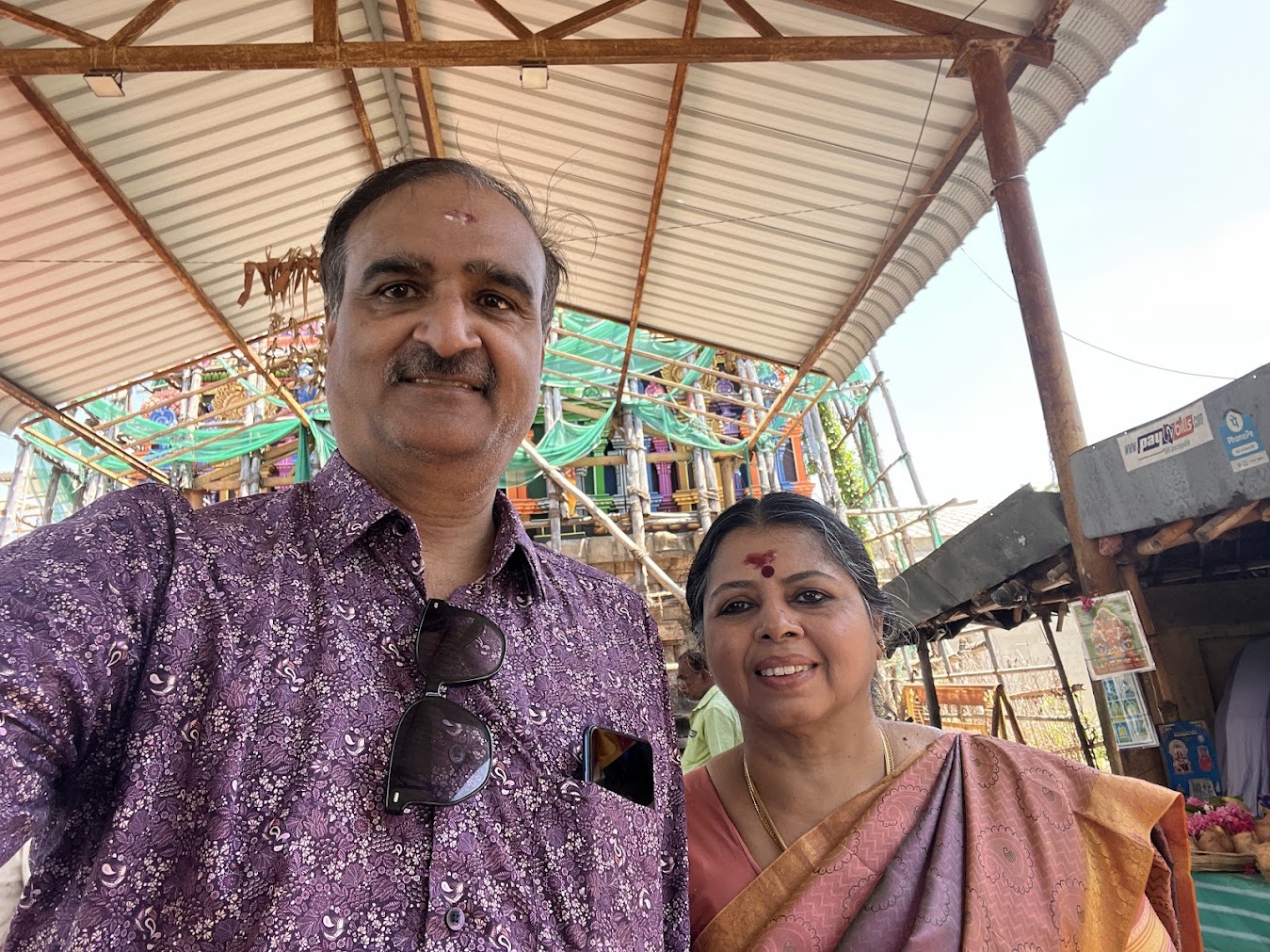

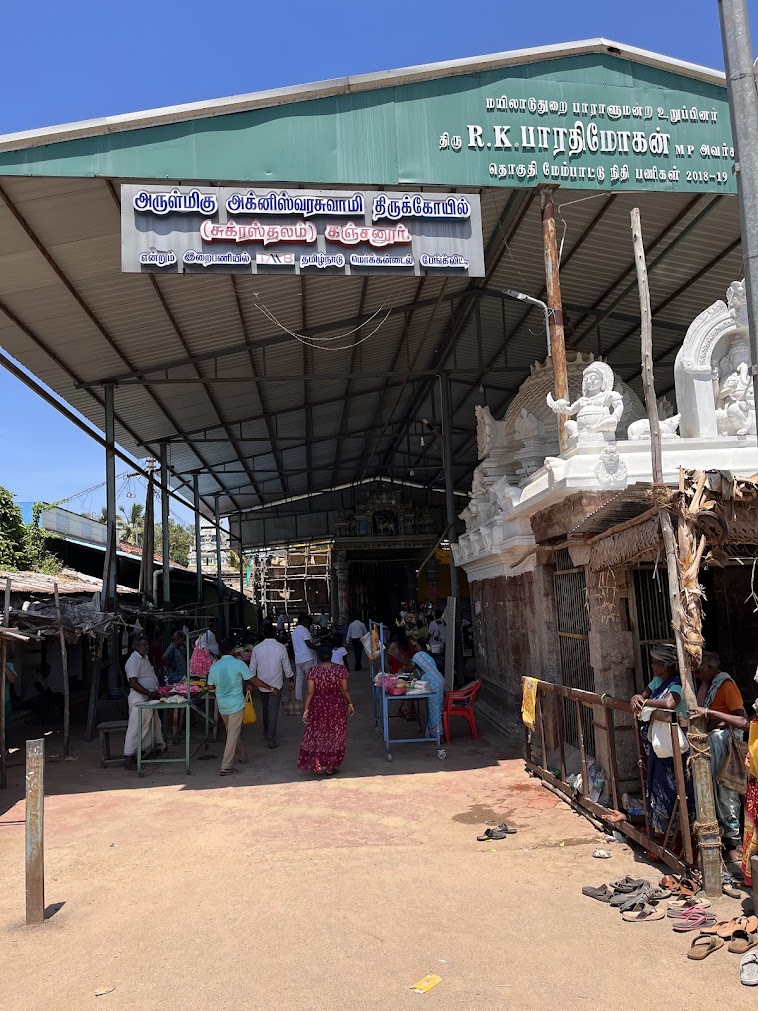

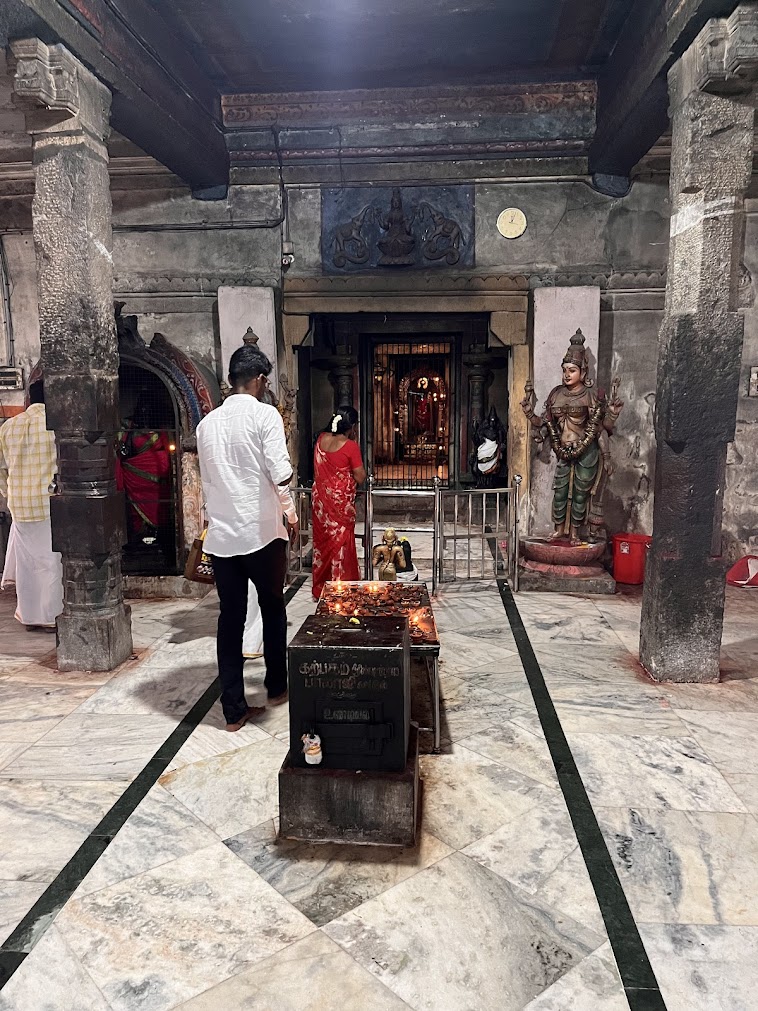


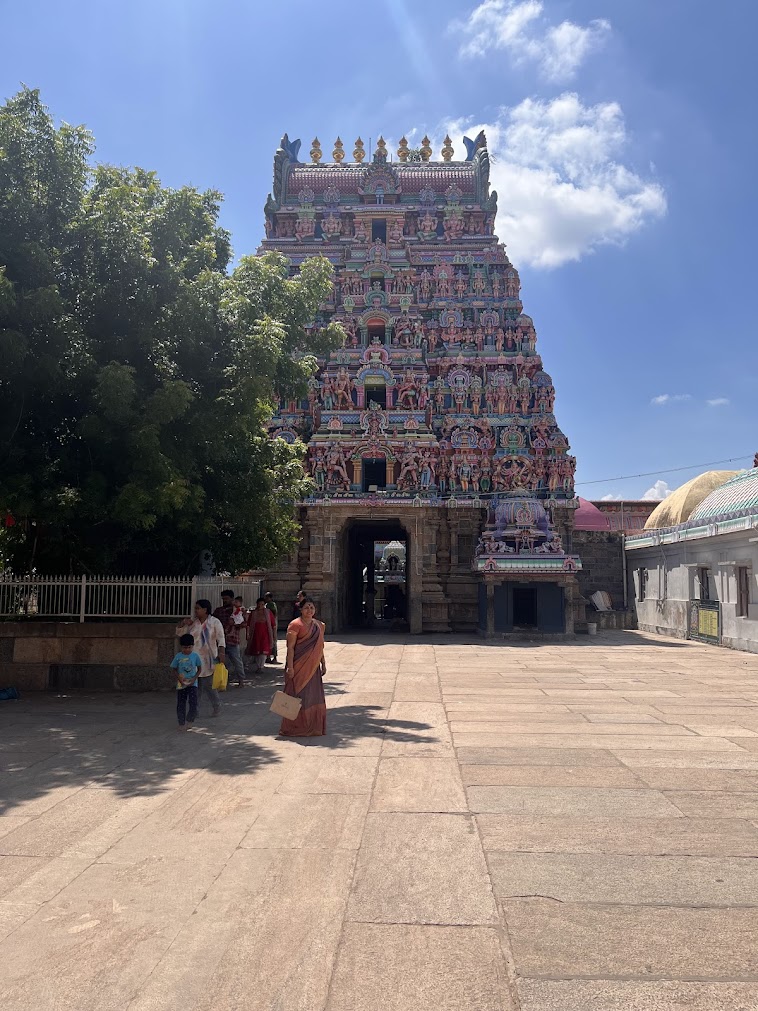


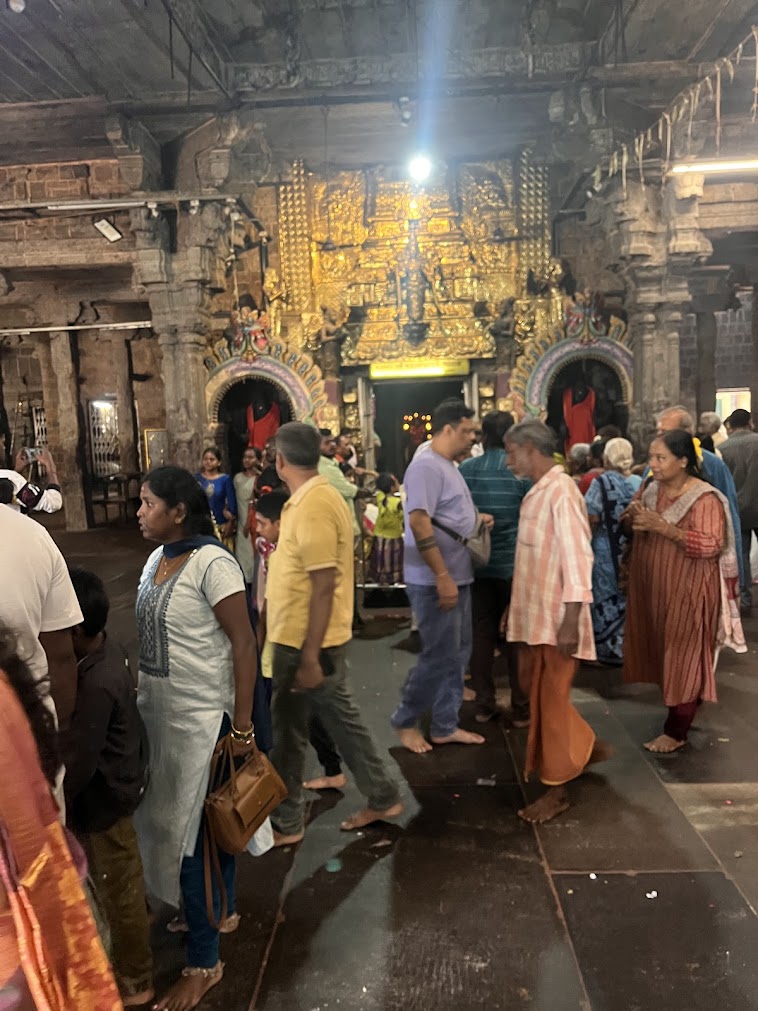
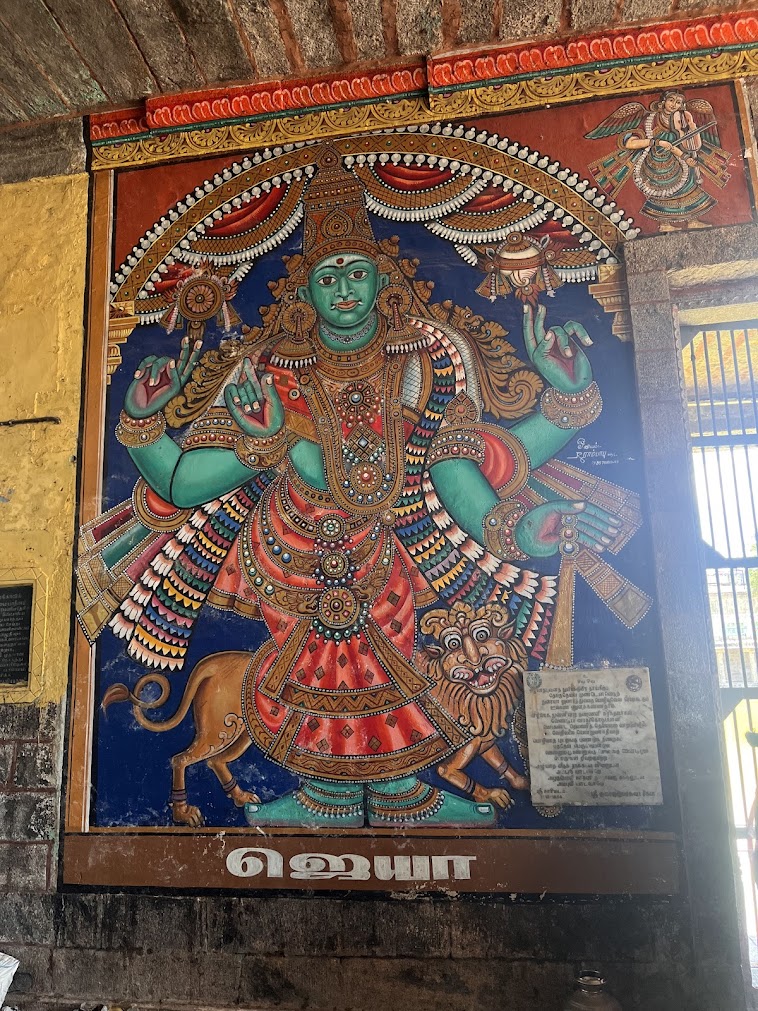

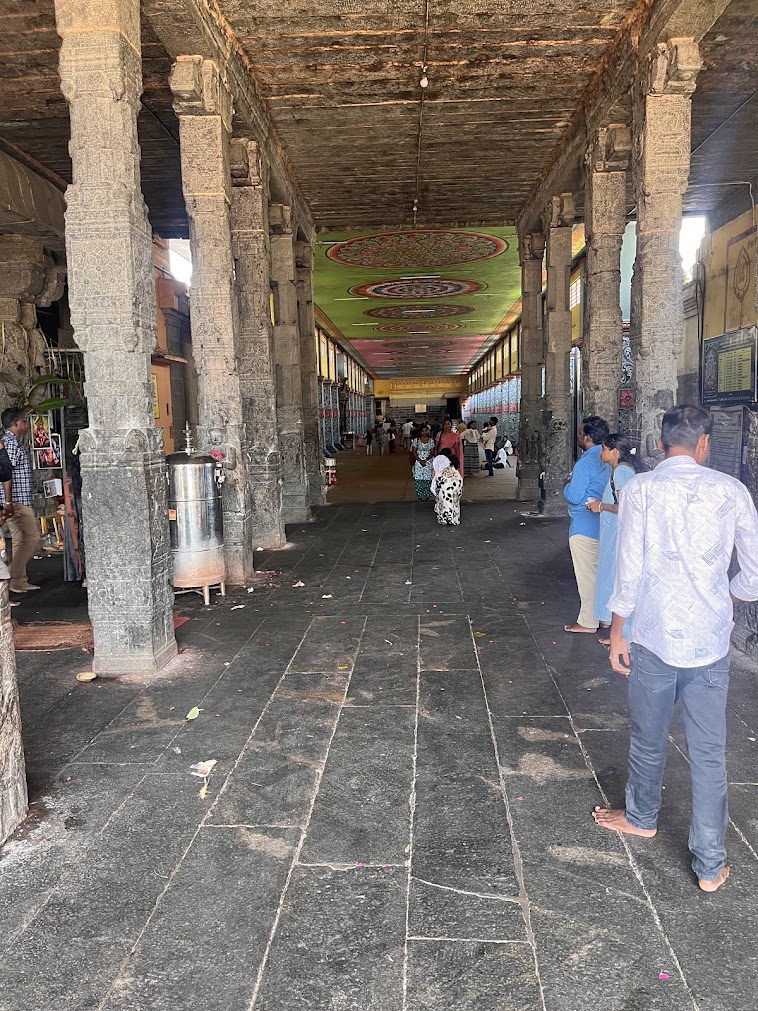
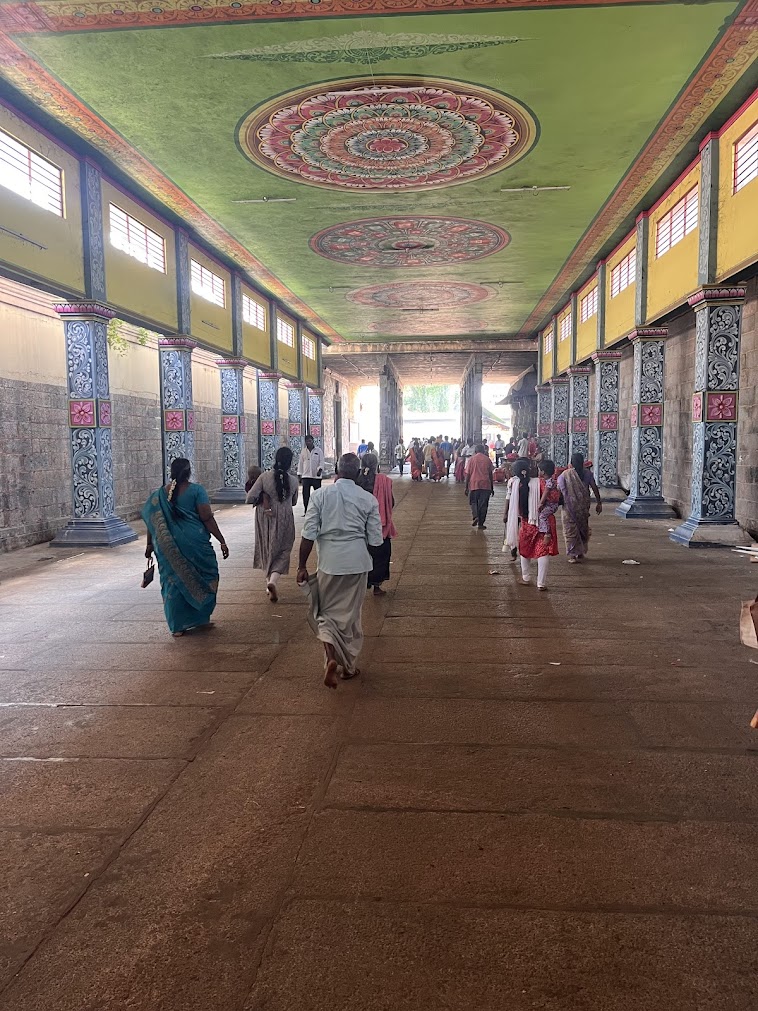
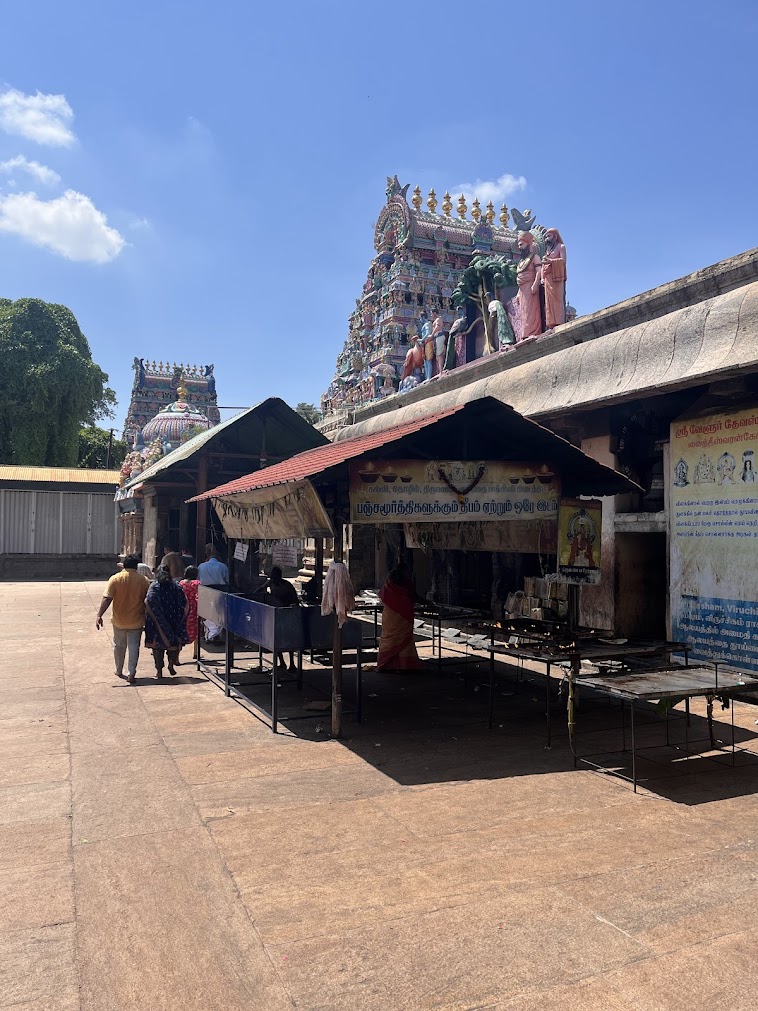


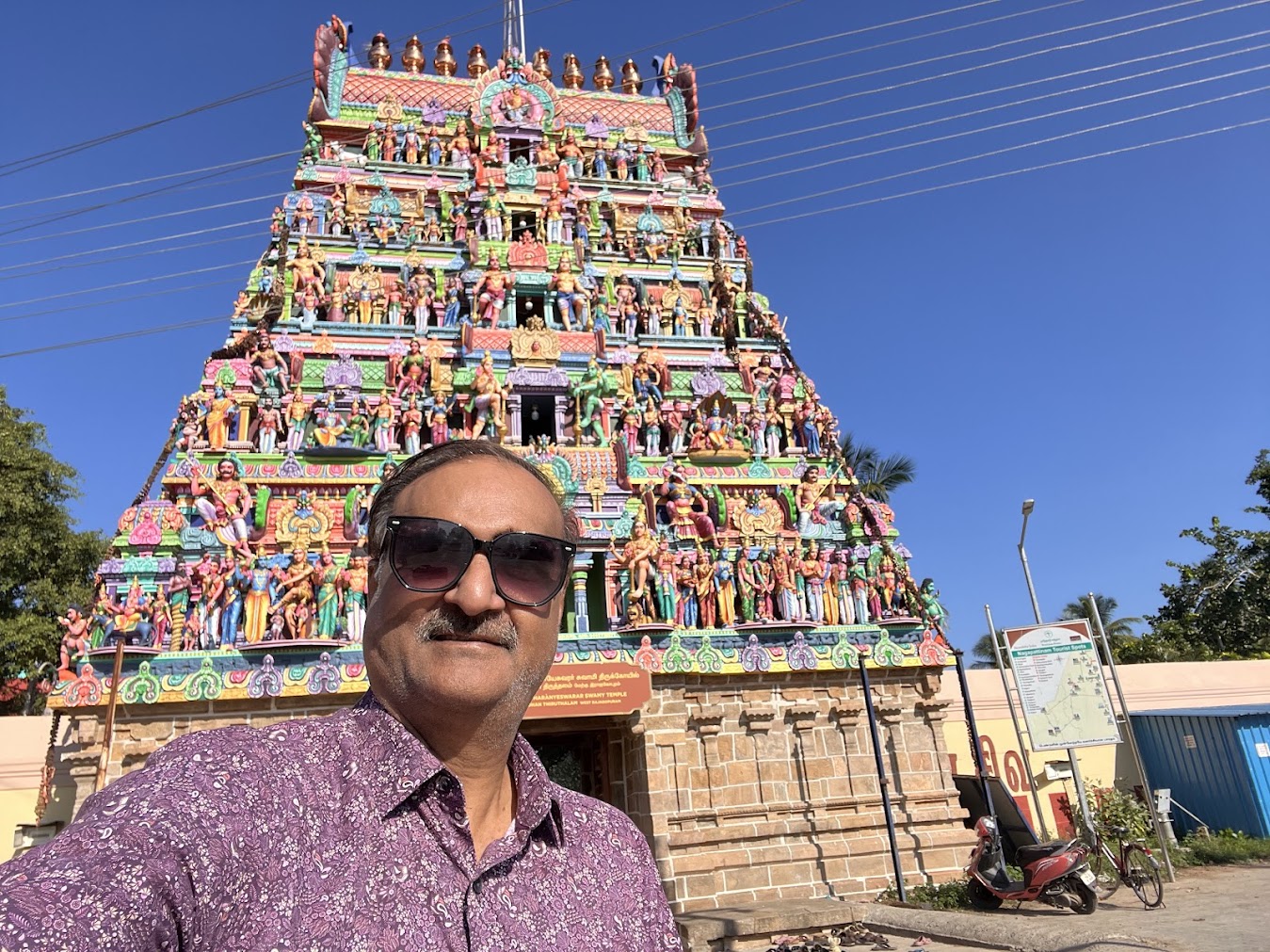

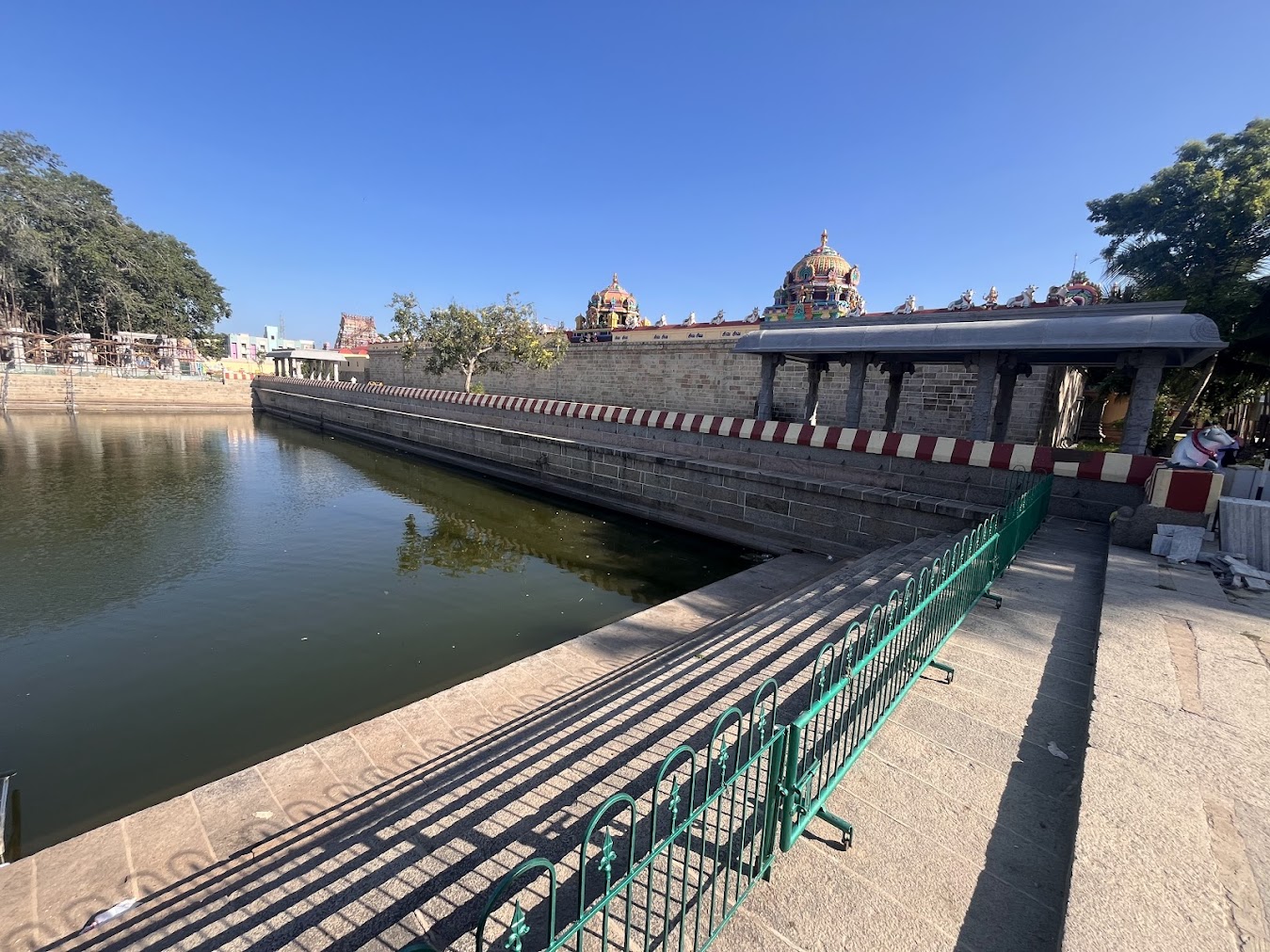
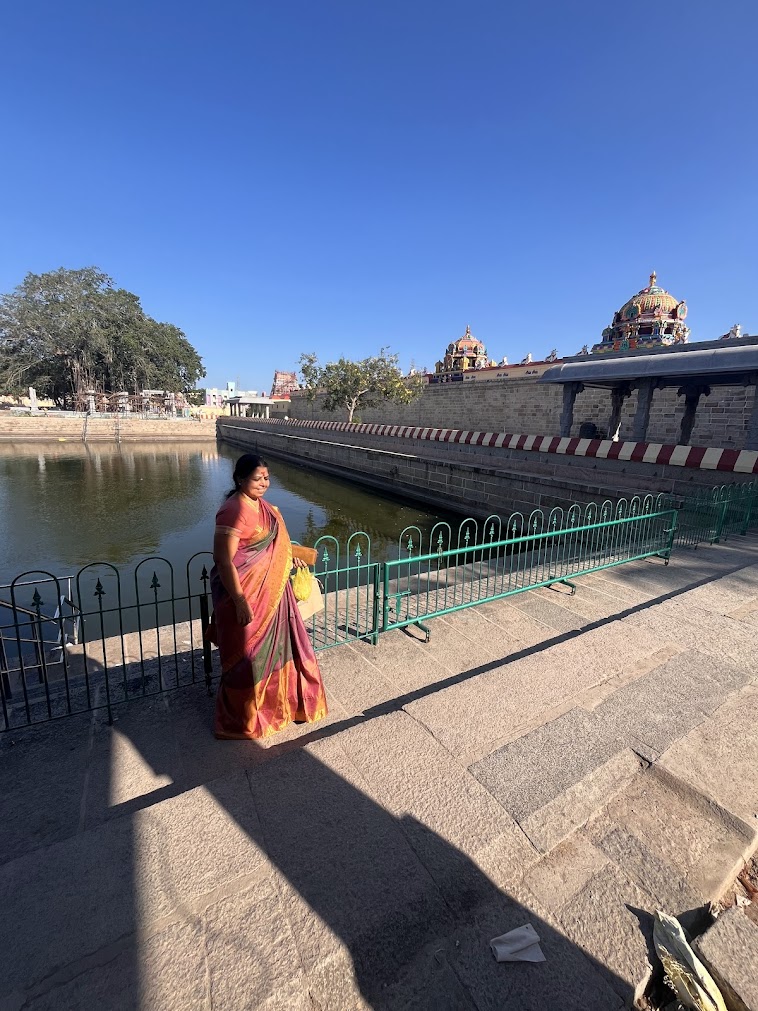
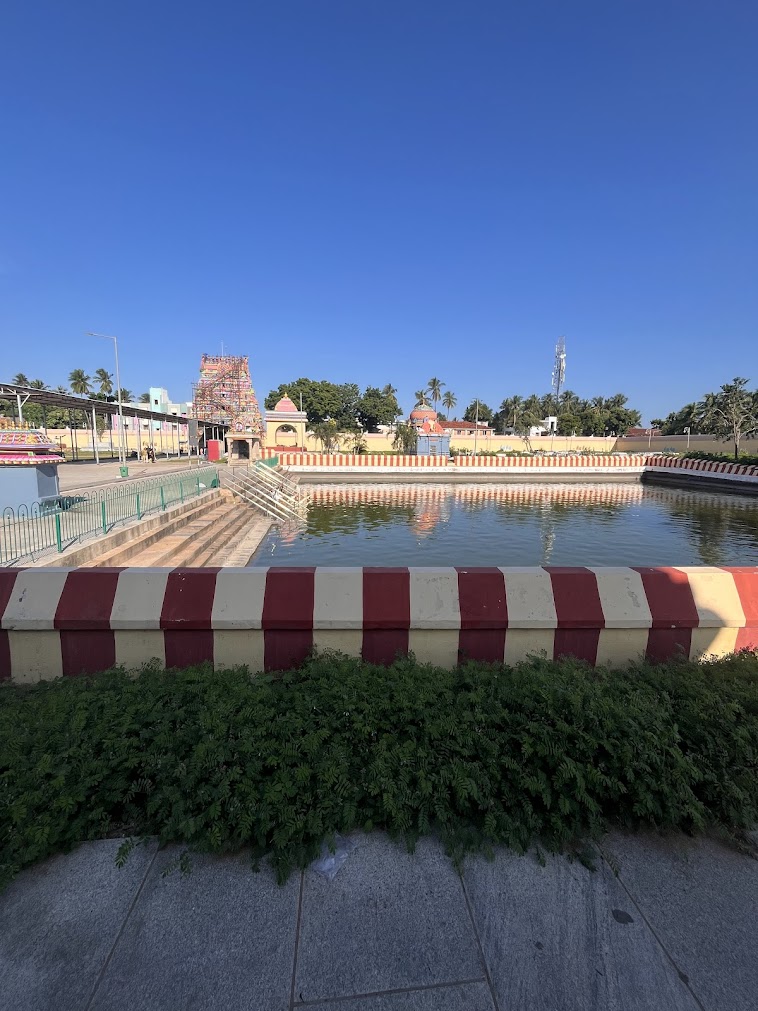
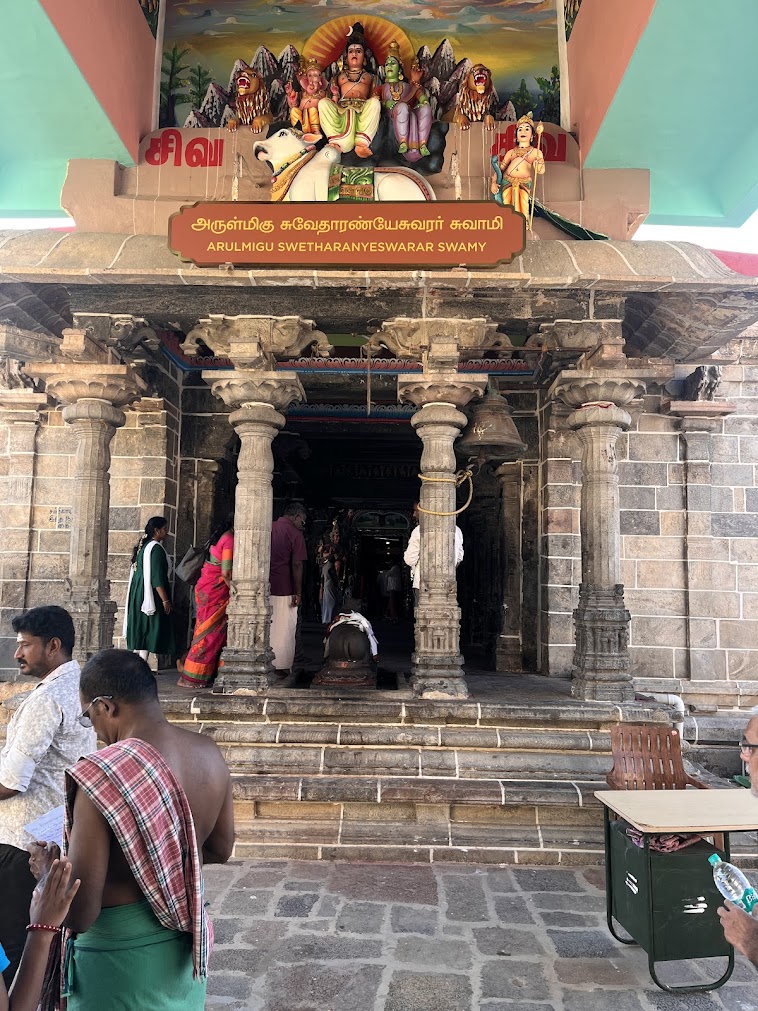
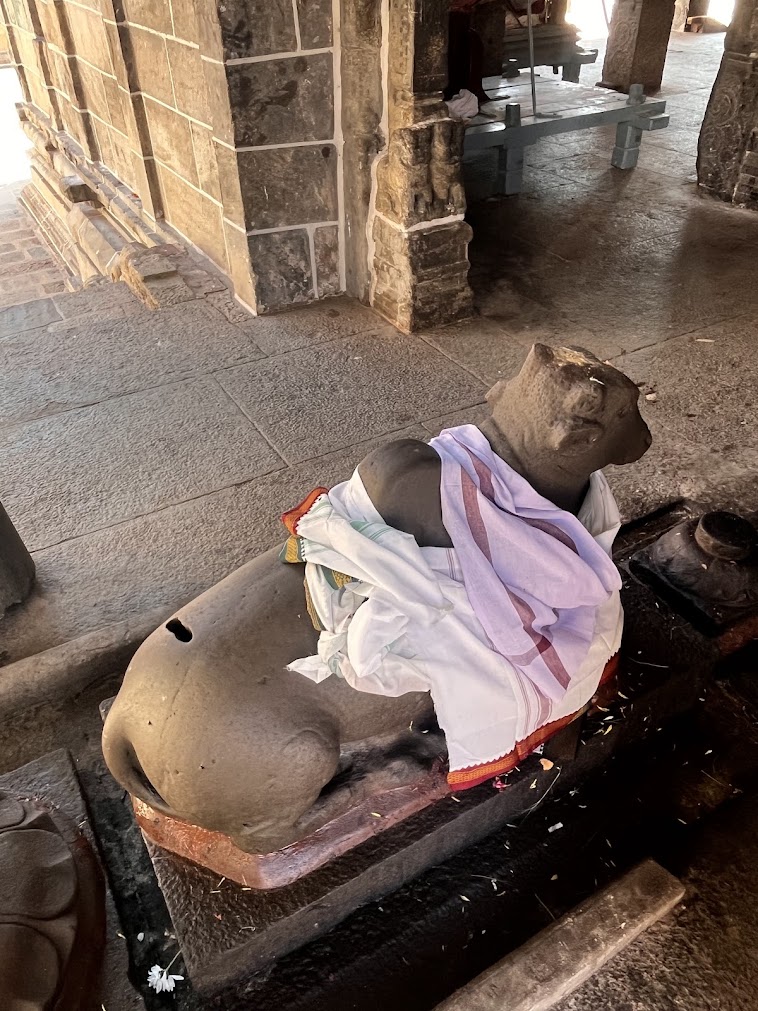
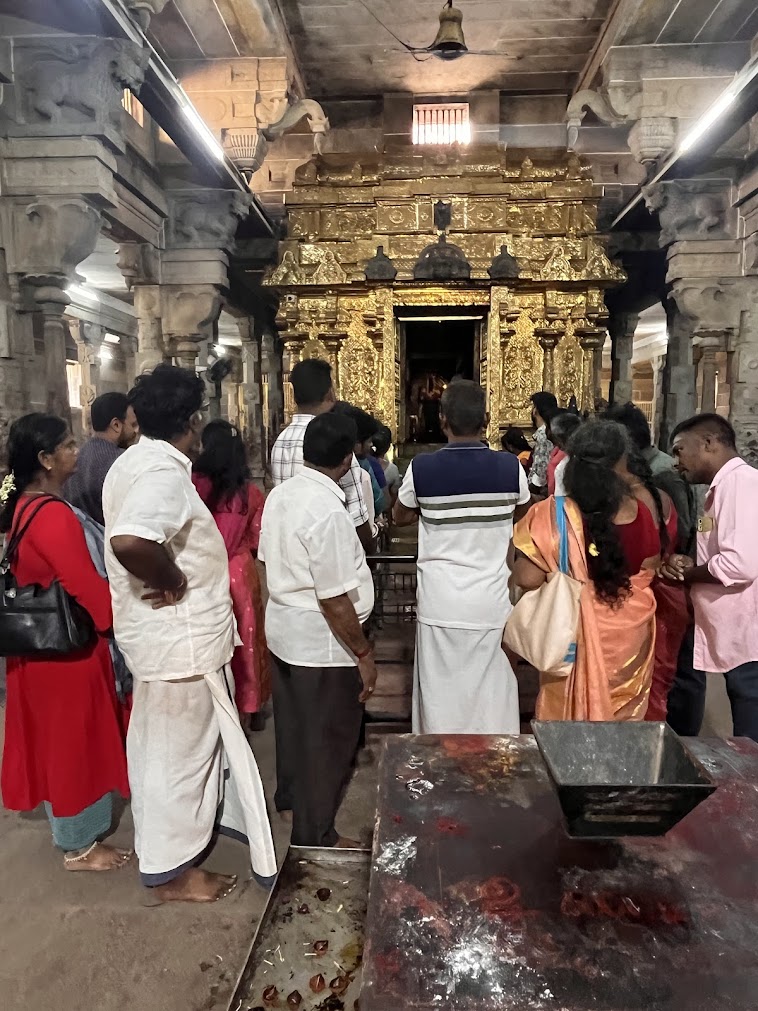


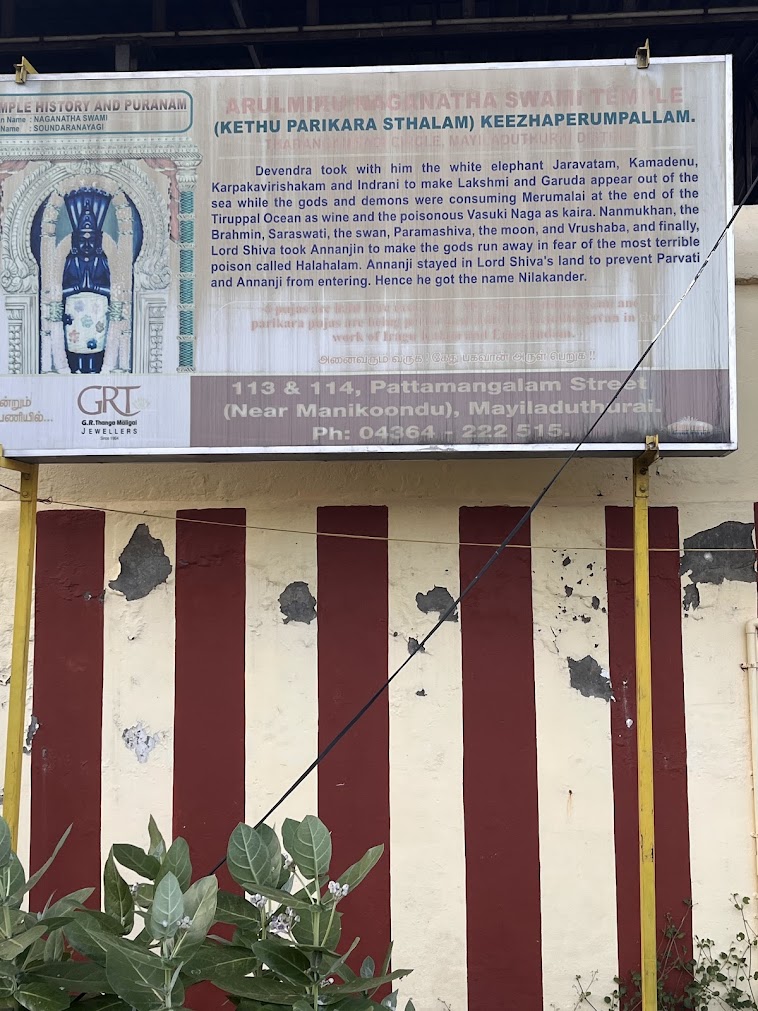
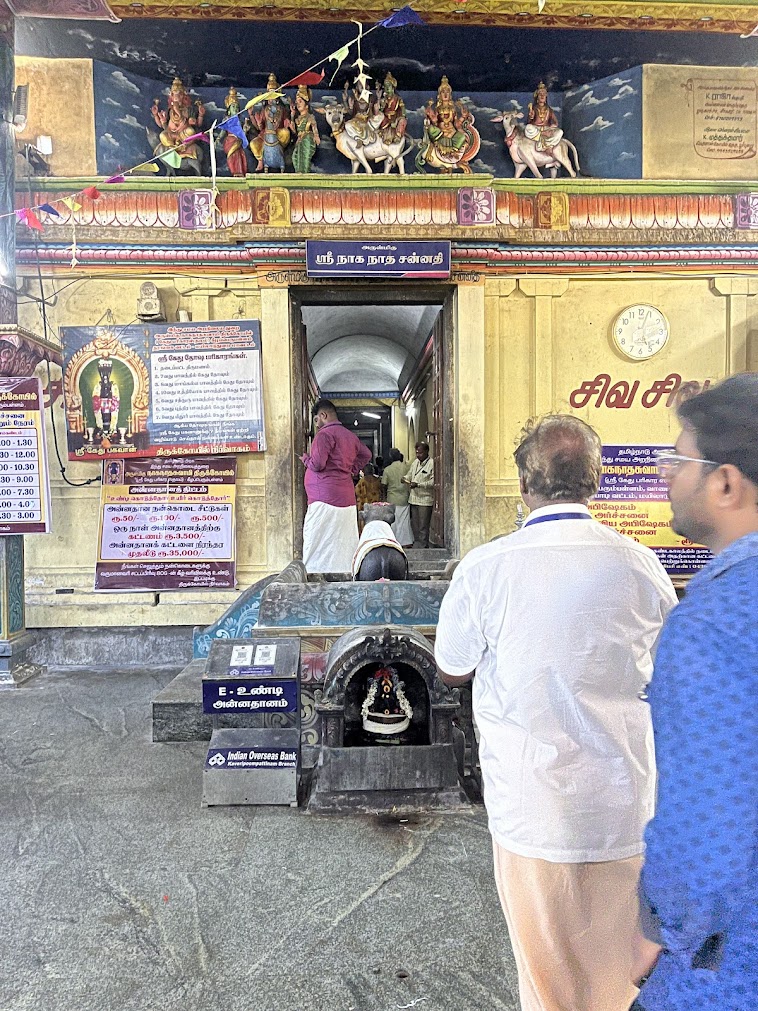



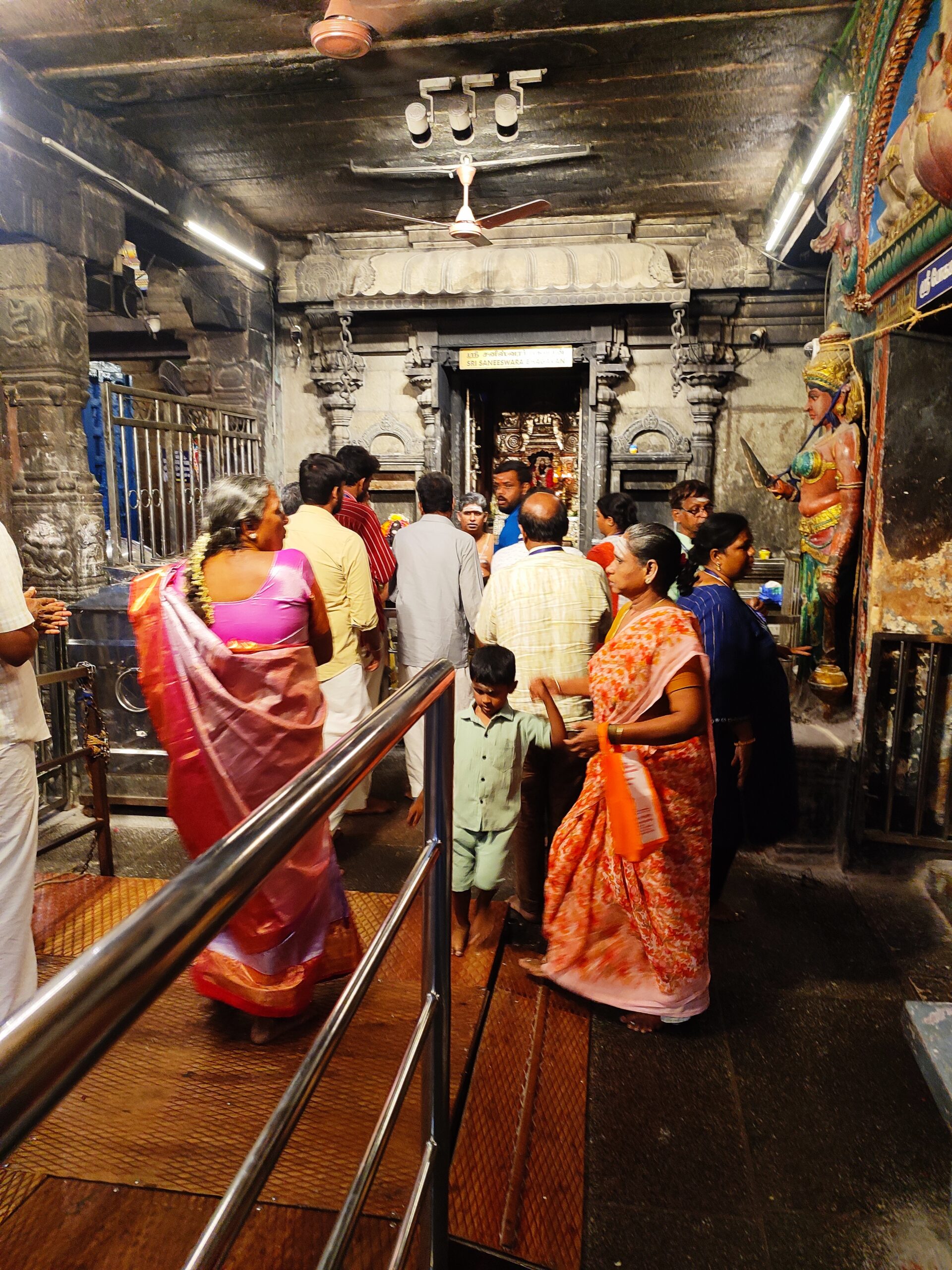


Very nice.. .can be a guide. Am forwarding to known contacts.
U.Singaravelu
Nice – detailed and information packed!
Very detailed tour of the Navagraha sthalam. Thank you